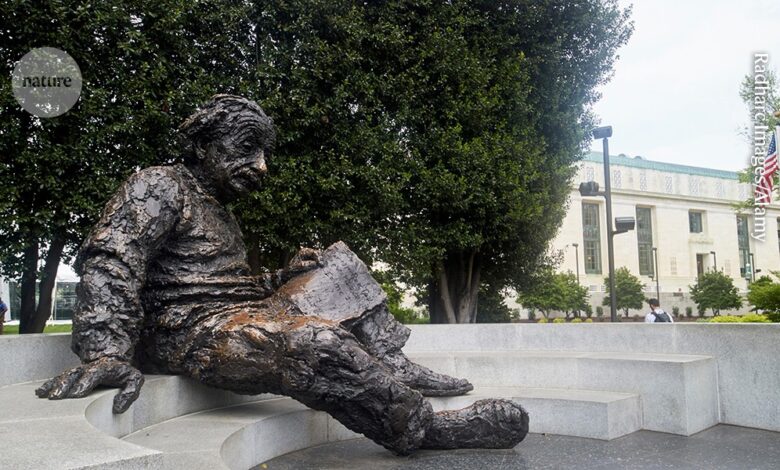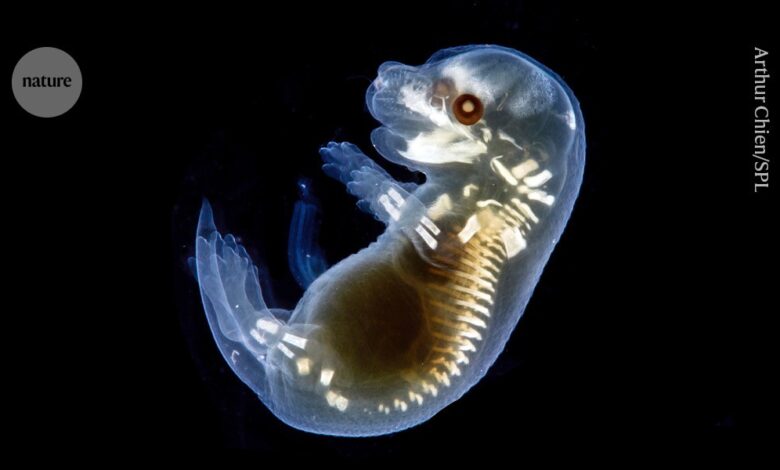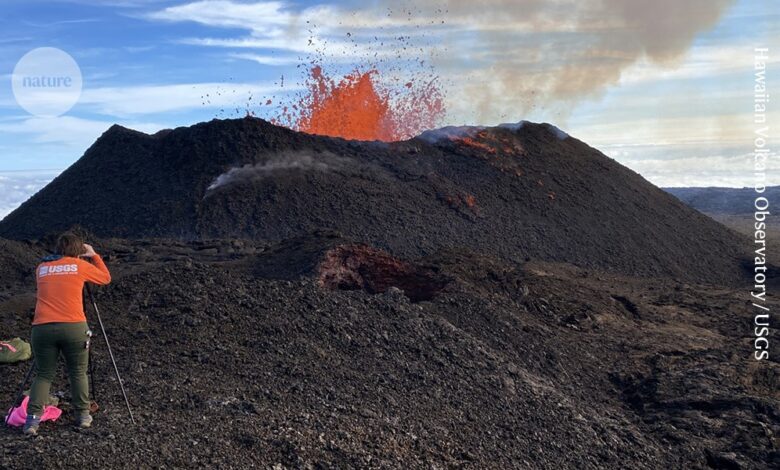Nature
-

How China’s bold talent recruitment has shaped science
Credit: Li Ziheng/Xinhua/Alamy Materials chemist Nan Liu took a career shortcut that many researchers can only dream of. She went from a postdoctoral position in the United States to a full professor at a Chinese university with a research budget of 4 million yuan (US$560,000). Liu, now at Beijing Normal University, was recruited as part of the Thousand Young Talents…
Read More » -

Solving aviation’s climate-action conundrum
Nature, Published online: 21 July 2025; doi:10.1038/d41586-025-02129-1 A decision-making tool for the aviation sector helps to assess the likelihood of a net positive outcome from climate actions that can have competing effects on warming. Source link
Read More » -

Giant radio telescope was ‘a natural magnet’ for African talent
Roger Deane speaks to early-career astronomers in the digital planetarium at the University of the Witwatersrand in Johannesburg, South Africa.Credit: Chanté Schatz/Wits University Radioastronomy in Africa In 2005, when South Africa and its partner countries in Africa submitted a proposal to host the world’s largest radio telescope, called the Square Kilometre Array, the continent had five radioastronomers, all based in…
Read More » -

the most extreme heatwaves are accelerating the fastest
The frequency of the longest and most dangerous heatwaves is increasing as the planet warms, research suggests1. Access options Access Nature and 54 other Nature Portfolio journals Get Nature+, our best-value online-access subscription $32.99 / 30 days cancel any time Subscribe to this journal Receive 51 print issues and online access $199.00 per year only $3.90 per issue Rent or buy this…
Read More » -

Turmoil at US science academy as Trump cuts force layoffs
The headquarters of the National Academy of Sciences in Washington DC.Credit: Radharc Images/Alamy One of the most influential scientific societies in the United States is in turmoil. Budget cuts by the administration of President Donald Trump have forced the US National Academies of Science, Engineering and Medicine (NASEM) into a wholesale reorganization. At the same time, many members are arguing…
Read More » -

Obesity drugs show promise for treating a new ailment: migraine
Obesity drugs might reduce pressure inside the skull, relieving migraines.Credit: LordHenriVoton/Getty Head-splitting migraines could be the next ailment in a seemingly endless list that a class of blockbuster weight-loss drugs might treat. In a small study, the drug liraglutide reduced monthly migraine episodes by nearly half among people with obesity who experience the headache-inducing condition. Migraine is more than a…
Read More » -

Mice with human cells developed using ‘game-changing’ technique
Light micrograph of a mouse embryo. Scientists are developing mice with human cells.Credit: Arthur Chien/Science Photo Library Researchers have developed mice with organs containing human cells, using a convenient and surprising approach — injecting the cells directly into the amniotic fluid of pregnant mice. The method resulted in baby mice with a sprinkling of human cells in their intestines, liver…
Read More » -

How our student journal club built on sand developed strong foundations
Sand is the most extracted commodity in the world.Credit: Marco Longari/AFP via Getty We started our faculty positions in Canada after spending two years as postdocs in the United States. At the time, the COVID-19 pandemic was winding down and in-person activities were slowly returning to normal. In this phase of our careers at McGill University in Montreal (where M.B.,…
Read More » -

Cancer-fighting CAR T cells show promising results for hard-to-treat tumours
T cells (blue) attack a prostate cancer cell (pink) in this scanning electron micrograph image.Credit: Steve Gschmeissner/Science Photo Library A clinical trial using engineered immune cells to hunt cancer cells has reported impressive results for solid tumours, a type of cancer that is difficult to treat. Compared with standard treatments, the immunotherapy lengthened survival of people with cancer1. The phase…
Read More » -

Scientists with ADHD speak up: when fire meets focus
Lis Gallant’s ADHD helps her to switch her attention rapidly to manage field site safety and data collection under intense volcanic conditions.Credit: Hawaiian Volcano Observatory/USGS For volcanologist Lis Gallant, her first clue that she might have attention-deficit hyperactivity disorder (ADHD) came during a conversation with a professor during her graduate studies. He noticed that her oral presentations were very detailed,…
Read More »
